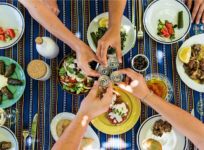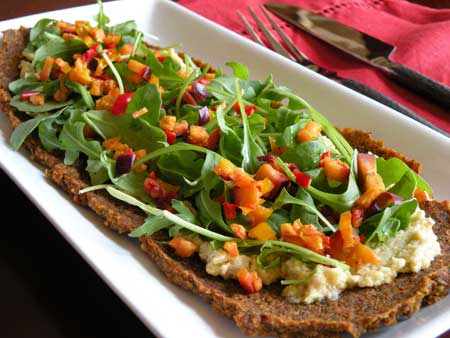 There’s nothing exactly new about consuming raw foods. From green salads and ripe fruits to raw meat, milk, and fish, societies across the globe subsist, at least in part, on foods unaltered by heat. In recent years, however, a fresh perspective on raw food has been reshaping the dietary choices of millions of health-conscious people seeking a simpler, cleaner way of eating.
There’s nothing exactly new about consuming raw foods. From green salads and ripe fruits to raw meat, milk, and fish, societies across the globe subsist, at least in part, on foods unaltered by heat. In recent years, however, a fresh perspective on raw food has been reshaping the dietary choices of millions of health-conscious people seeking a simpler, cleaner way of eating.
As the blossoming raw foods movement spreads throughout the US, it raises many questions. How can healthcare providers best guide patients interested in exploring a raw foods lifestyle?
Defining “Raw Foodism”
Most simply, a “raw food” or “living food” diet is one that derives at least half of its calories from uncooked food. The spectrum of raw foodism ranges from raw veganism (ie, no animal products) to diets that incorporate raw meat and non-pasteurized, non-homogenized milk products. Raw food preparation techniques include soaking, sprouting, fermenting, dehydrating, and warming living foods to temperatures of no higher than 40-46° C (104-115° F). All raw food diets share the inclusion of significant amounts of uncooked, unprocessed and, in most cases, organic food.
Raw foodists encourage a diet that contains as much as 80-100% raw foods. They argue that because certain essential vitamins, minerals, and enzymes are denatured by heat, refraining from high-heat cooking allows us to obtain the highest level of nutrition possible from our food.
While the scientific literature on raw foods diets is limited, some studies suggest striking improvements on a variety of health measures as a result of a high raw food intake. Consuming a predominantly raw vegan diet has been linked to a range of positive health outcomes, including beneficial effects on blood pressure (Fontana L, et al. 2007. Rejuvenation Res. 10(2): 225-234), improvement of rheumatoid arthritis symptoms, (Hanninen O, et al. 2000. Toxicology. 155: 45–53), and the alleviation of fibromyalgia symptoms (Kaartinen K, et al. Scand J Rheumatol. 2000; 29(5): 308-313).
improvements on a variety of health measures as a result of a high raw food intake. Consuming a predominantly raw vegan diet has been linked to a range of positive health outcomes, including beneficial effects on blood pressure (Fontana L, et al. 2007. Rejuvenation Res. 10(2): 225-234), improvement of rheumatoid arthritis symptoms, (Hanninen O, et al. 2000. Toxicology. 155: 45–53), and the alleviation of fibromyalgia symptoms (Kaartinen K, et al. Scand J Rheumatol. 2000; 29(5): 308-313).
Raw food advocates view their approach to eating as far more than a dietary choice; they see it as a comprehensive lifestyle centered on principles of sustainability and optimal health for themselves and for the planet.
The Tree of Life Rejuvenation Center (TOL) in Patagonia, AZ, is an epicenter of this movement, where visitors are offered a direct experience of this lifestyle under the supervision of a full medical staff. The center was founded by Gabriel Cousens, MD, a controversial Columbia University-trained psychiatrist, who has spent much of the past 30 years studying Ayurveda, yoga, and the healing practices of the ancient Essenes and other near-eastern cultures.
In his book, There Is a Cure for Diabetes: The Tree of Life 21-Day+ Program, and at the Tree of Life residential programs, Dr. Cousens claims that diabetes can sometimes be reversed and the need for insulin and other diabetes drugs obviated through fasting and detox regimens, and adoption of a raw food lifestyle. This claim runs counter to conventional medical wisdom, for which Dr. Cousens has received some criticism.
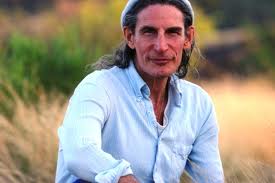
Through these programs, in which raw foods play a central role, Dr. Tice and his colleagues introduce participants to “a quality of life that is healing both to themselves and to the planet on every level from agricultural interests of our society to personal health, emotional health, and spiritual health.” The “side effects” of the raw foods lifestyle, Dr. Tice says, are “a state of higher coherence, deep cleansing, and sustainable healthy living for oneself and the planet.”
The Cousens lifestyle programs taught at TOL have not been subjected to a formal clinical study. However, in 2006 Lena Zajic, an independent nutrition consultant who trained at TOL, conducted a two-year online survey of 525 individuals around the world who were following a raw food lifestyle. Not surprisingly, the findings showed consistent improvement in weight management, elimination of allergies, and improvement in other facets of health and wellbeing. The Zajic survey was never published in a peer-reviewed scientific journal but has been posted on the Iowa Source online magazine.
While certain nutritional benefits are most effectively reaped from food in its raw form, it is also true that cooking enhances the availability of many other nutrients. This may in part explain why anthropologists have yet to identify a single culture anywhere in the world that subsists entirely on raw foods.
Raw vs. Cooked Foods
Across the globe and throughout time, societies have invested huge amounts of time and energy into hunting, growing, and harvesting food that requires cooking. In addition to increasing the availability of some vitamins and minerals, cooking also increases the digestibility of starches and proteins, and acts as a defense mechanism against parasites and other pathogens (Carmody, RN, Wrangham, RW. 2009. J Human Ev. 57: 379–391).
At a time when contamination of fresh food with pathogens like Salmonella and E. coli seems to be on the rise—owing to poor regulation of and poor working conditions in US and global agriculture—some people are challenging the wisdom of “going raw.”
The benefits of incorporating some amount of raw fruits and vegetables in our diet are numerous and uncontroversial. Living foods contain essential nutrients that are most effectively assimilated by the body in their raw, uncooked state. The Vitamin C contained within fresh produce, for instance, is highly susceptible to degradation when it is cooked or processed (Lee SK, Kader AA. 2000. Posthrvst Bio and Tech. 20: 207–220).
Few would debate the value of including some raw foods in one’s daily intake; the 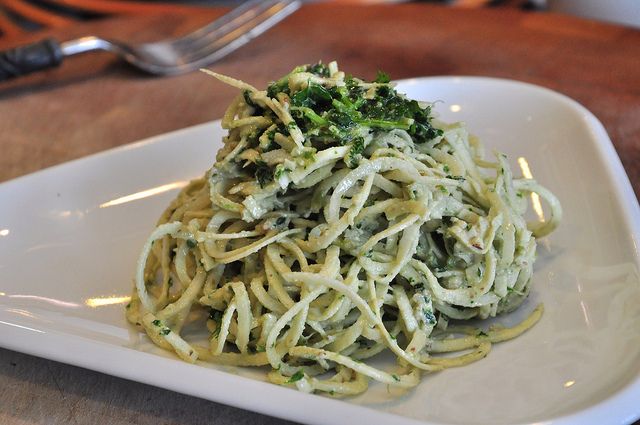 contention around raw foodism instead focuses on the portion of one’s diet that should necessarily be comprised of uncooked food products and whether it is truly healthy for someone to live primarily or exclusively on raw foods. Perhaps the question needs to be re-framed: for whom is raw foodism a healthy choice, and why?
contention around raw foodism instead focuses on the portion of one’s diet that should necessarily be comprised of uncooked food products and whether it is truly healthy for someone to live primarily or exclusively on raw foods. Perhaps the question needs to be re-framed: for whom is raw foodism a healthy choice, and why?
One point that remains unclear is whether the improvements some people experience after adopting a raw foods lifestyle are attributable to the foods contained within the diet, or to those that a raw food diet intentionally leaves out.
Raw foodists eliminate virtually all processed foods from their diet. This includes a variety of foods to which many people are allergic or otherwise highly sensitive, such as processed and refined sugars, oils, salt, and gluten. Perhaps the most beneficial aspect of the raw foods lifestyle is not that it is based on uncooked food, per se, but that it offers a simple, straightforward, and effective path for the removal of the most harmful, least healthful components of the standard American diet.
It is intriguing to wonder whether raw foodists would fair just as well, or even better, on a cooked version of their raw diets, or if raw foods truly contain a unique living force that cannot be retained through cooking.
Healthful for Whom?
Dr. Andrew Brandeis, ND, a practicing naturopath in San Francisco, who has trained at both the True North Health Center in Santa Rosa, and the Body Mind Restoration Retreat Center in New York, explains that cooking essentially initiates the digestive process by beginning to break down food before it is ingested.
This step may be particularly important for individuals coping with chronic digestive difficulties such as irritable bowel syndrome, Crohn’s disease, colitis, or parasitic infections. Raw food, Dr. Brandeis advises, “is usually relatively hard on the gut,” which means that consuming large amounts of uncooked food may not be the best choice for people who do not produce enough stomach acid or whose digestion is otherwise impaired.
Without a well-functioning digestive system, it is difficult or even impossible for the body to effectively extract all of the nutrients available in raw foods. “If you have any kind of impaired digestion and you eat a bunch of raw food,” Dr. Brandeis explains, “you’re going to wind up fermenting that undigested food in your gut,” which can lead to uncomfortable side effects like gas and bloating. Ultimately, that undigested food is simply expelled from the body, without its nutrients ever having been absorbed.
The inability to fully digest and assimilate the nutrients present in living foods may explain why studies on the consumption of strict raw foods diets show a high correlation between high intake of raw food and loss of body weight. In an investigation of the effects of a diet containing 70–100% raw foods of plant origin, researchers found that while the diet lowered total cholesterol and triglyceride concentrations, it also lowered serum HDL cholesterol and increased tHcy concentrations, due to vitamin B-12 deficiency (Koebnick C, et al. J. Nutr. 2005; 135: 2372–2378).
In a separate study, investigators concluded that since many raw food dieters were underweight and had amenorrhea, a long-term strict raw food diet is not advisable (Koebnick C, et al. Annals of Nutrition & Metab.1999; 43: 69-79).
Finding a Balance
While they should be taken seriously, the potential drawbacks of extreme raw foodism do not negate the value of incorporating uncooked food into our regular diet. Traditional cultures throughout the world have long recognized value of raw foods, and in some cases they are even recommended in the treatment of specific health conditions.
Practitioners of Traditional Chinese Medicine sometimes suggest that because raw foods are inherently cooling, cleansing, and purifying in nature, it is beneficial for individuals suffering from conditions associated with heat and inflammation to increase consumption of raw and minimally-cooked foods.
However, TCM principles also advise that cooling, raw foods should be avoided in the instance of health conditions characterized by dampness and cold; excessive consumption can weaken digestion and assimilation processes, and impede the body’s ability to maintain its vital life essence (Pitchford, P. 2002. Healing with Whole Foods: Asian Traditions & Modern Nutrition (North Atlantic Books)).
Owing to the unique physiology and dietary needs of each individual, there may not be an ideal or exact amount of raw food that is appropriate for everyone. What is clear, however, is that we can all benefit from including some raw food in our regular diets, and that eating at least a small amount of raw food is likely better than eating none at all.
For many Americans, this could mean making a change as small as adding a single salad or a piece of raw fruit to their daily routine. Certified Raw Foods Chef Meredith Baird suggests that the concept of raw foodism need not be unnecessarily complicated. At its core the key message is simply to “eat more fresh fruits and vegetables.”
Raw Goes Gourmet
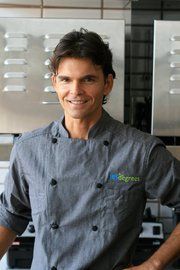 Baird believes that common misconceptions regarding the preparation and availability of raw food cuisine lead many people to believe that it is unattainable or overly complex. “You don’t have to think of it as an all-or-nothing lifestyle,” she explains.
Baird believes that common misconceptions regarding the preparation and availability of raw food cuisine lead many people to believe that it is unattainable or overly complex. “You don’t have to think of it as an all-or-nothing lifestyle,” she explains.
Working alongside renowned chef and raw cuisine pioneer, Matthew Kenney, Baird was closely involved with the development of Matthew Kenney OKC, a 100% raw vegan restaurant in Oklahoma City. The restaurant’s unlikely location in the heartland was carefully chosen for a reason; according to the Centers for Disease Control and Prevention, Oklahoma is among the highest-ranking states in prevalence of adult obesity.
Like the guests who have found improved health through their experiences and education at her restaurant, Baird believes that the majority of people notice significant shifts in their health and wellbeing when they incorporate more foods “not from a can, not processed, just more fruits and vegetables in their whole form” into their diets.
Matthew Kenney’s restaurant and culinary academy, which trains chefs working at restaurants and hotels all over the globe, reflect a growing trend toward fresh, healthy, organic food in the hospitality and restaurant industries. High-level, 4-star raw, vegetarian and vegan restaurants have—excuse the pun–sprouted up in cities and even some small towns throughout the country.
These eateries are setting new standards for flavor, quality, and innovation in the preparation of minimally-processed foods.
Advising Patients
When working with patients who are seriously interested in exploring a raw foods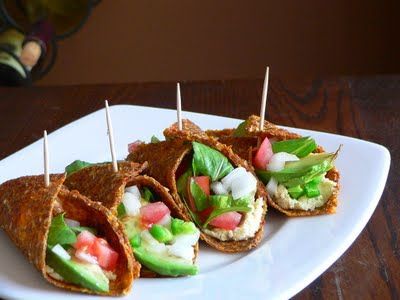 lifestyle, Dr. Brandeis advises physicians to first conduct a comprehensive digestive health assessment. This will give a clear picture of patients’ digestive status, and should include elements like HCl production, pancreatic enzyme levels, and the state of intestinal flora, all of which are key factors in determining the ability to digest and extract nutrients from food. Recommended tests include the Metametrix GI Effects panel, Genova Diagnostics CDSA, and/or an HCl deficiency test. In general, people taking acid-blocking PPIs are advised to avoid a high raw foods diet.
lifestyle, Dr. Brandeis advises physicians to first conduct a comprehensive digestive health assessment. This will give a clear picture of patients’ digestive status, and should include elements like HCl production, pancreatic enzyme levels, and the state of intestinal flora, all of which are key factors in determining the ability to digest and extract nutrients from food. Recommended tests include the Metametrix GI Effects panel, Genova Diagnostics CDSA, and/or an HCl deficiency test. In general, people taking acid-blocking PPIs are advised to avoid a high raw foods diet.
If a patient has the digestive fortitude to support a diet based largely on raw food, it is important that the transition be made gradually. The first step might be to eliminate processed foods and to replace them with natural, whole food alternatives. For most people, this change alone will likely have tremendous favorable impacts on physical, mental, and emotional well-being.
Ultimately, however, there is no one single miracle diet that is equally beneficial for everyone. Self-exploration and experimentation are necessary to find the ideal amount of raw food that one can safely and comfortably include in one’s diet. Digestive discomfort often indicates that the body is not able to adequately process what it is being fed; sensations of vitality, clarity, and heightened energy tend to be markers of appropriate nutrition and digestive ease.
According to Dr. Tice, physicians who are truly interested in working with patients to incorporate raw foods into their diets might first sample the raw foods lifestyle themselves. “Personal experience is the most effective way to radiate and share the experience of optimal health on physical, mental, emotional, and spiritual levels with patients who are interested in elevating their health to the next level through living foods.”
The same may be true of any new dietary exploration, and particularly one that involves a transition away from highly refined, processed packaged foods to one high in whole, natural, organic ingredients. When approached holistically, this transition can be a profound source of self-insight, discovery, and empowerment, regardless of the amount of raw or cooked foods the diet contains.
END
Kristen Schepker holds a Master’s degree in Integrative Health Studies from the California Institute of Integral Studies. She is a certified yoga instructor and holistic health and wellness coach practicing in San Francisco, CA.

